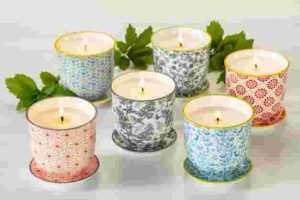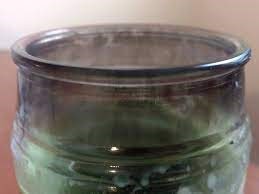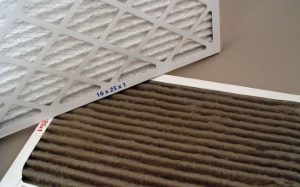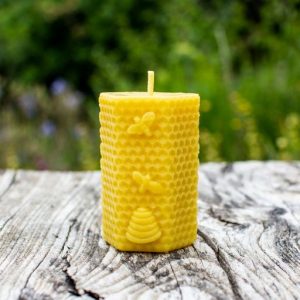PRODUCTS USED ON DAILY BASIS
Who hasn’t already bought a candle to make a gift or to help decorate a space at home or even to create a romantic atmosphere during a date? Added to that, who can’t relate to having his or her own daily-used perfume or recognizing somebody because of the essence of a certain artificial aroma? The answer to both questions is for a fact that an exceedingly amount of people makes use of perfumes and candles.
To some extent, the consumption of candles is growing massively and even more when it comes to scented candles. It is obvious that candles throw a light into spaces allowing to create in a certain way your own oasis while stimulating your senses. Later studies have shown that scented candles can even reduce anxiety. If we consider perfumes as well, they can also be the ideal present for a celebration or can either bring back memories of a meaningful event, moment, or person.
Unfortunately, as every chemical product ever conceived, there is also a huge bad side of the story, especially in the matter of indoor air pollution. As consumers, we are commonly blinded by the selling power of large companies concerning this issue and we don’t identify its real extent.


Without being too extreme, how does they really affect our Indoor air quality and in what way can they be looked at as toxic?
BAD EFFECTS IN INDOOR SPACES AND ON HUMAN HEALTH
When candles are burned, they release carcinogenic toxins such as benzene, toluene, formaldehyde, acetaldehyde, acrolein which are also emitted when burning diesel fuel. Therefore, the indoor air quality gets much worse. They also contaminate ventilation system’s ductwork or the heating in homes or workplaces while at the same time the air conditioning (HVAC) system redistributes the polluted air into these indoor spaces. HVAC filters tent to become clog quickly. In unventilated spaces primarily, all these emissions can lead to extremely serious health problems.


Candles can be separated into two different categories based on their chemical content and more precisely on their aroma. On one hand, there are the conventional candles. On the other hand, we have the scented candles. Both place invisible particulate matter into the air. One of the worst are paraffin candles as they have toxic metal wicks releasing soot into your indoors’ air. By definition, paraffin is a petroleum by-product; in other words, a residue treated with stabilizing chemicals and bleached to be used in a wide variety of products.
As a matter of fact, we, humans, breath a larger proportion of indoor air in comparison to outdoor air during a usual day. We can then be a lot more affected if the indoor air quality is not acceptable. Soot particles, generally regulated by state governments and the federal, are commonly found in the air as fine particles or coarse particles. Our health can then be damaged in a first-degree level due to the size of particles. For instance, they could invade the lungs, lower respiratory system, and alveoli aggravating asthma as well as causing common allergies, puberty disruptions, hormone alteration, early menopause, irritating the respiratory system, eyes or skin and even be the main source of cancer according to the World Health Organization’s International Agency for Research on Cancer. With an even larger view of the problem, the biodiversity can be endangered because of the exchange between indoor and outdoor air.

Directly linked to scented candles, studies reveal that 90% of fragrances are made from chemicals. Harmful chemicals such as toluene or benzene are also found in perfumes as well as limonene acetone or phthalates, known to be a hormone disrupting chemical. Moreover, there is data implying that scented products account for twice as much as vehicle fuel.
BEING OR TRYING TO BE ECO-FRIENDLY WHEN USING CANDLES AND PERFUMES
Does it mean that we should completely stop using them? Solutions never come from extreme measures. Nevertheless, candles and perfumes need to be limited and used correctly in order to protect our health but also our environment.
If we consider an perfect, ideal world, the best solution would be to eradicate them totally from our lives. Alternatives have then been proposed so as to replace these toxic products. By way of illustration, candle warmers do not require a flame and are still able to warm gently the wax. Besides, they do not emit any smoke, toxic chemicals, or soot. Diffusers, beeswax candles or even organic soy candles may also add fragrance to the room without really getting the air dirtier.
Diffusers fill the room with natural fragrances by dispersing essential oils. Whereas beeswax candles can clean the air by releasing negative ions which bind with toxins, leaving no inorganic byproducts or chemicals in the room. Its hot flame allows the wax and the wick to burn totally. The honey fragrance as well as the golden bright light brought by them might conquer you to the point of not needing to buy paraffin candles anymore. The indoor air gets also cleanse of allergens and odors, improving your health and wellbeing.

When it comes to soy candles, the ones made without pesticides and growth-modified-organisms represent an easily renewable choice. Generally, plant based, and all-natural essential oils have also therapeutic effects.
Nonetheless, if you don’t really get the time to find more pure and sage candles and still decide to use normal candles, there is a large diversity of considerations which should be taken into account. Unscented candles are always a better choice as they contaminate less the indoor air. To illustrate this purpose, the size of the wick seems to be a matter of extreme importance when talking about more ecological candles. You might trim the wick to a quarter of an inch or less before lighting for the first time and avoid wicks being too thick. Ideal candle wicks are to be thin and braided preferably in cotton or paper using core to prevent them from falling over. Candles should be kept burning for one hour maximum and must cool before relighting. Another huge common error is the use of containers. Equipped with narrow mouth openings, these will be the source of unsteady air flow and increase flicker. A huge improvement to be made is doing great ventilation and avoiding direct drafts of air on the candles. A good habit to have when burning candles in a regular basis in your home or workplace is to check and change all HVAC filters to ensure a better and cleaner air circulation in the enclosed space. Lastly, combustible materials must be kept away from candles.
Regarding perfumes, their use is still very common, and it doesn’t seem to really be slowing down. A huge progress would actually be to reduce their use and if not at least try to look for the ones which are more eco-friendly so as to protect the environment and our lungs.
BIBLIOGRPAHY:
“Are Candles Bad for the Air Quality in Your Home? – Blue Ox Heating & Air.” Blue Ox Heating & Air, 6 Aug. 2019, https://goblueox.com/blog/are-candles-bad-for-the-air-quality-in-your-home/.
“The Dirty Truth about Candles and Indoor Air Quality, Air Conditioning Repair for Huntsville & Madison AL, HVAC-Tips.” Conditioned Air Solutions, https://www.facebook.com/ConditionedAirSolutions/, 7 Jan. 2021, https://www.conditionedairsolutions.com/the-dirty-truth-about-candles-and-indoor-air-quality/.
“—.” Conditioned Air Solutions, https://www.facebook.com/ConditionedAirSolutions/, 7 Jan. 2021, https://www.conditionedairsolutions.com/the-dirty-truth-about-candles-and-indoor-air-quality/.
“—.” Prana Air, https://www.facebook.com/airprana, 7 Dec. 2021, https://www.pranaair.com/blog/indoor-air-pollution-from-perfumes-are-they-harmful/.